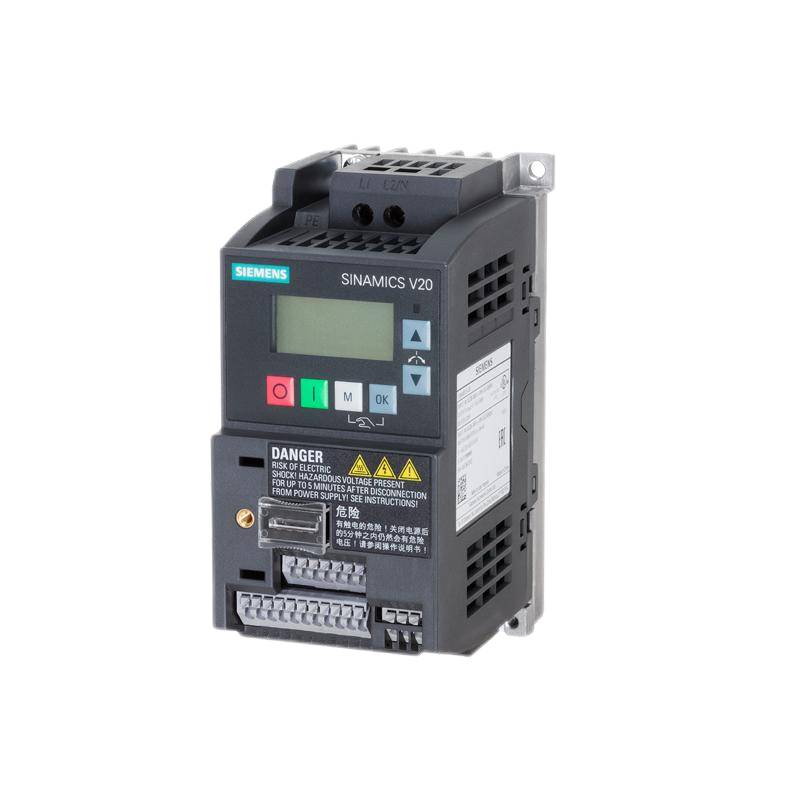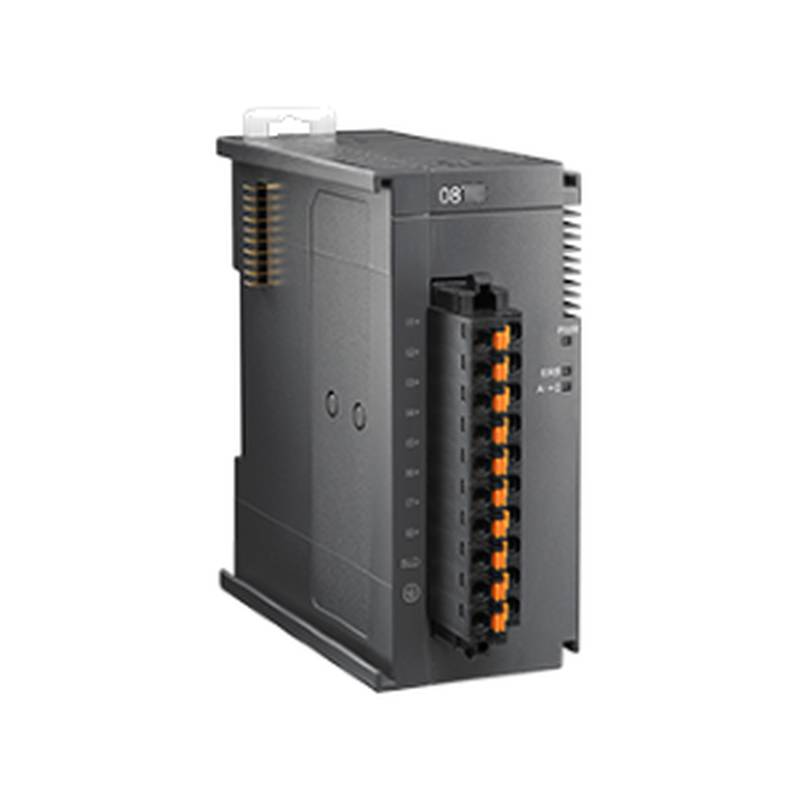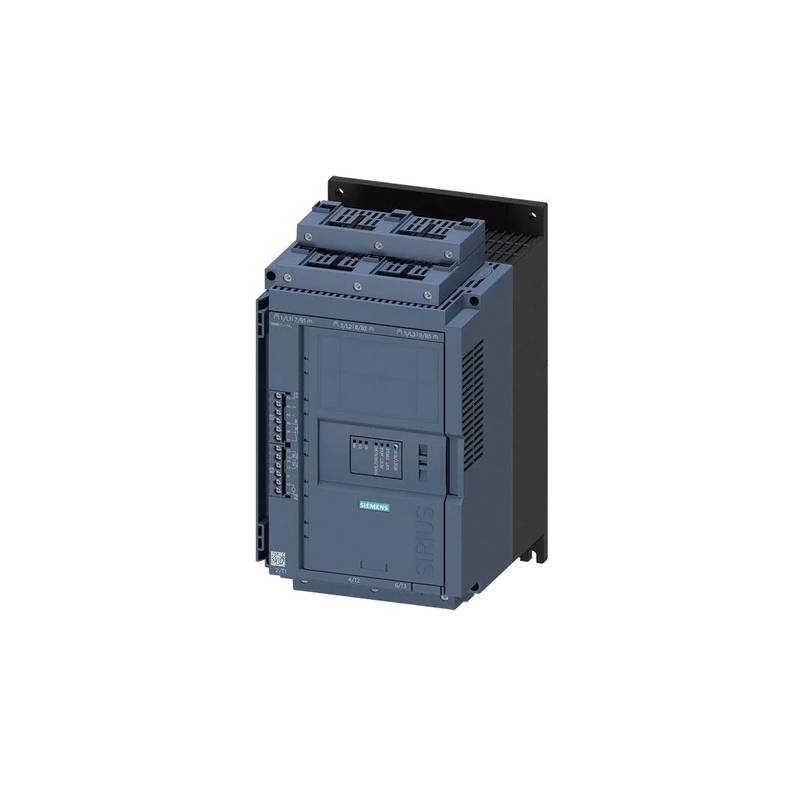
The Yaskawa J1000 Series VFD, model JB4A0002BBA, is a robust Variable Frequency Drive specifically engineered for small conveyor applications, delivering 1.8A and 0.4kW of power. This compact and efficient drive offers precise speed control, enhanced energy savings, and reliable performance, making it an ideal solution for diverse material handling needs. Its user-friendly interface and straightforward integration capabilities further solidify its position as a top choice for industrial automation requiring seamless conveyor operation.
Product Specifications
| Feature | Specification |
| :----------------------- | :--------------------------- |
| Model Number | JB4A0002BBA |
| Series | J1000 |
| Rated Output Power | 0.4 kW (0.5 HP) |
| Rated Output Current | 1.8 A |
| Input Voltage | 200-240 VAC, 1 Phase |
| Output Voltage | 200-240 VAC, 3 Phase |
| Frequency Output Range | 0.0 to 400.0 Hz |
| Control Method | V/f Control |
| Ambient Temperature | -10°C to +50°C (derating may apply) |
| Enclosure | IP20 |
| Dimensions (H x W x D) | 143 mm x 70 mm x 128 mm |
| Weight | Approximately 0.9 kg |
Core Features & Market Positioning
The Yaskawa J1000 JB4A0002BBA stands out in the market for its dedicated design tailored to the specific demands of small conveyor systems. Unlike more generalized VFDs, the J1000 series excels in providing intuitive operation and robust control crucial for material transport. Its V/f control method ensures stable operation for inductive loads typical in conveyor motors. Furthermore, Yaskawa's reputation for reliability and longevity in industrial automation gives users confidence in the long-term performance of this drive, positioning it as a dependable, cost-effective solution for businesses seeking to optimize their conveyor efficiency.
Key Application Scenarios
This Yaskawa J1000 VFD is exceptionally well-suited for a variety of small-scale material handling tasks. Common applications include small parts sorting and assembly lines in electronics manufacturing, automated packaging systems in food and beverage industries, and baggage handling in smaller logistics hubs. Its precise speed adjustment capabilities are invaluable for maintaining consistent flow rates and preventing product damage during transport. The drive's compact size also makes it ideal for integration into space-constrained machinery or retrofitting existing conveyor setups.
Practical System Integration Guidance
Integrating the Yaskawa J1000 JB4A0002BBA into a conveyor system is designed for simplicity. Ensure the input power supply (200-240 VAC, 1 Phase) is correctly connected to the L1 and L2 terminals. The motor power leads (U, V, W) should connect to the output terminals. For basic operation, the drive can be configured using the onboard keypad and display to set the motor's rated frequency, voltage, and base speed, typically found on the motor nameplate. Basic parameter adjustments for acceleration and deceleration times can further fine-tune conveyor performance.
For more advanced control, such as external speed commands or start/stop signals, utilize the digital input terminals. Refer to the J1000 series programming manual for specific terminal assignments and parameter settings. Ensure proper grounding for both the VFD and the motor to prevent electrical noise and ensure safe operation. Always consult the official Yaskawa installation manual for detailed wiring diagrams and safety precautions before proceeding with any installation.
When commissioning, it is crucial to perform an auto-tuning function if available for the connected motor. This process optimizes the drive's performance by measuring motor parameters. Verify motor rotation direction after initial startup and adjust if necessary via parameter settings. A systematic approach to parameter setup, starting with essential motor data and then proceeding to operational controls, will ensure a smooth and efficient integration of the Yaskawa JB4A0002BBA into your conveyor application.
Operation and Risk Mitigation
Operating the Yaskawa J1000 JB4A0002BBA involves configuring essential parameters through its intuitive keypad interface. Common settings include motor frequency, voltage, and current, along with acceleration and deceleration ramp times. Users should familiarize themselves with error codes displayed on the drive's panel to quickly diagnose and resolve operational issues. For instance, an "OL" (Overload) fault typically indicates the motor is drawing too much current, which could be due to excessive load or incorrect motor parameters.
To mitigate risks, always ensure the VFD is properly installed in a clean, dry environment with adequate ventilation to prevent overheating. Adhere strictly to wiring guidelines to avoid short circuits or incorrect phase connections. Regular inspection of motor and VFD connections for signs of wear or damage is recommended. Implementing an emergency stop function that safely de-energizes the motor is crucial for operator safety.
When troubleshooting, consult the J1000 series fault code list in the user manual. Common issues like "UV" (Under Voltage) or "OV" (Over Voltage) often point to power supply problems, while "E.OC" (Output Phase Loss) might indicate a motor winding issue or a blown internal fuse. Always disconnect power before performing any physical checks or maintenance on the drive or connected equipment to prevent electrical shock.
Scalability & Long-Term Value
While the Yaskawa J1000 JB4A0002BBA is optimized for small conveyor applications, its integration into larger automation systems is supported by Yaskawa's broader product ecosystem. The drive can be networked using optional communication cards (if supported by the series) to integrate with PLCs and SCADA systems, enabling centralized monitoring and control. This allows for a degree of scalability, where multiple J1000 drives can be managed as part of a larger material flow process.
The long-term value of the J1000 series is enhanced by Yaskawa's commitment to product quality and support. Its robust design ensures a long operational lifespan, reducing the total cost of ownership. For applications that may grow beyond the 0.4kW capacity, Yaskawa offers a wide range of VFDs in higher power ratings and advanced series (like the A1000 or V1000) that maintain compatibility in terms of control philosophy and programming structure, facilitating future upgrades.
Furthermore, as industries move towards Industry 4.0, the J1000's ability to provide precise motor control contributes to the efficiency and data collection necessary for smart manufacturing. While not an IIoT device itself, its reliable performance and integration capabilities lay the groundwork for more connected and automated factory floors. This ensures that an investment in the J1000 series continues to provide value as automation technologies evolve.
Frequently Asked Questions
1. What are the primary benefits of using the Yaskawa JB4A0002BBA for small conveyors?
This VFD offers precise speed control for optimal material flow. It significantly improves energy efficiency by matching motor speed to load requirements. The drive provides enhanced motor protection features, extending equipment life.
2. How do I wire the Yaskawa J1000 VFD to a standard 3-phase conveyor motor?
Connect the 200-240 VAC, 1-phase input power to terminals L1 and L2. Connect the three motor leads (U, V, W) to the drive's output terminals. Ensure proper grounding is established for safety and noise reduction.
3. What are common error codes for the Yaskawa JB4A0002BBA and how can I resolve them?
"OL" indicates overload; check motor load or parameters. "UV" means under-voltage; inspect the power supply. "OV" signifies over-voltage; verify input voltage stability. Always consult the manual for specific codes and solutions.
4. Can the Yaskawa J1000 JB4A0002BBA be used with a 1-phase motor?
No, this VFD is designed to control a 3-phase motor from a 1-phase input power source. It converts the single-phase input to a three-phase output, which is required by most standard industrial conveyor motors.
5. What is the maximum motor size this VFD can control?
The Yaskawa JB4A0002BBA is rated for a 0.4kW (0.5 HP) motor. Attempting to use it with a larger motor will likely result in overload faults and potential drive damage. Always match the VFD's capacity to the motor's requirements.
6. Does the Yaskawa J1000 VFD support V/f control or vector control?
This specific model, the J1000 series, primarily utilizes V/f (Volts per Hertz) control. This method is highly effective for simpler loads like many small conveyor applications where precise torque control isn't paramount.
7. What is the typical operating temperature range for the Yaskawa JB4A0002BBA?
The drive typically operates within an ambient temperature range of -10°C to +50°C. Operation at the higher end of this range may require derating or consideration of additional cooling measures to maintain performance.
8. How can I adjust the speed of my conveyor using the Yaskawa J1000?
Speed is adjusted by programming the desired output frequency via the drive's keypad or through external control signals. Parameters for acceleration and deceleration ramps can also be set to control the smoothness of speed changes.
9. Is the Yaskawa JB4A0002BBA suitable for hazardous environments?
No, this VFD has an IP20 enclosure rating, making it suitable for general industrial environments. It is not designed for protection against dust, water ingress, or explosive atmospheres. Specialized drives are required for such conditions.
10. What is the warranty period for the Yaskawa J1000 Series VFD?
Yaskawa typically offers a standard warranty for their drives, often one to two years, depending on the region and specific terms of sale. It is advisable to confirm the exact warranty duration with your authorized Yaskawa distributor or reseller.

























